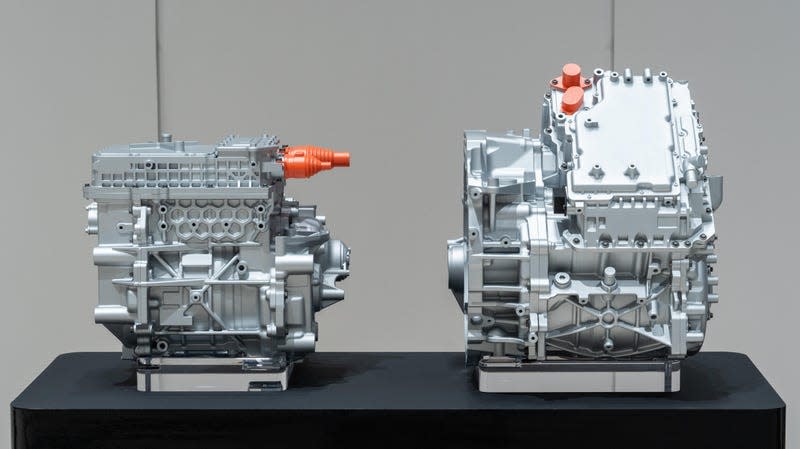Nissan's Next EV Powertrains Will Be Smaller, Cheaper, and Use Less Rare Earth

EVs have to get cheaper. There’s no other way around it. For the EV transition to be successful, EVs have to reach price parity with gas vehicles and be accessible to a large part of the car-buying public. One of the ways that those cheaper prices can be reached is by manufacturers reducing production costs. Nissan is heading in that direction with a new manufacturing approach to EV powertrains.
In case you missed it:
Nissan calls its new manufacturing approach X-in-1. It’s essentially a modular EV powertrain structure. The main components for its EVs and e-POWER powertrains will be shared across two versions of this EV powertrain.
Read more

Smaller versions will use a 3-in-1 setup consisting of the motor, inverter, and inducer.

The larger 5-in-1 e-POWER setup adds a modular generator and increaser. Given their modular designs, Nissan says both setups can be produced on the same manufacturing line.
This approach has big advantages for both Nissan and the consumer. For Nissan, these modular setups are 10 percent smaller and will allow for better powertrain packaging. Speaking to Automotive News, Nissan Senior Vice President for powertrain development Toshihiro Hirai said the approach reduces “diversity” and that a key piece in this plan is making the powertrains less complex and ensuring that there is a commonality to them.

Cost is another key component of the plan. Nissan says the modular setup costs 30 percent less for the company to produce. Most importantly is that these new powertrains won’t rely on heavy rear earth metals in their construction. These new powertrains have heavy rare earth metals that make up “one percent or less of magnet weight.”
While Nissan has said that it has four new EVs for the U.S. that should debut in 2026, it’s not known what models these new powertrains will show up in. Hirai said that the powertrains will start rolling out in models in 2024 or ‘25 with a full production rollout in ‘26. The downside to all of this is that the U.S. may or may not get to experience these new setups. The company hasn’t said whether or not the powertrains will show up in the new models slated for debut in the U.S.
More from Jalopnik
Sign up for Jalopnik's Newsletter. For the latest news, Facebook, Twitter and Instagram.

 Yahoo Autos
Yahoo Autos 